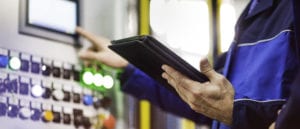When a manufacturer like Schneider Electric makes a corporate commitment to support a circular economy, as we described in an earlier post, it’s a very good thing. However, working out the details of how to do that takes some serious effort.
In some respects, it requires a fundamental change in strategy. Although traditional manufacturing is good at supporting the “take, make, dispose” model, that practice is ultimately not sustainable. Rather, we as a manufacturer needed to seek out ways to minimize or eliminate waste by ensuring our products lend themselves to the 5 R’s of the circular economy, namely being repaired, reused, refurbished, remanufactured, and ultimately recycled. Embracing these options supplants the 3 R’s (reduce, recycle, reuse) of a linear approach and keeps products, components and materials at their highest utility and value at all times.
Such a strategic adjustment offers both great opportunities and great challenges to a company like ours – a large multinational manufacturer with a broad and diverse range of products – and we are embracing both.
How we approached reuse
As we sought out ways to shift to a circular, 5R approach, we quickly realized that applying the reuse approach to obsolete inventory was rich in possibilities. This is something all manufacturers face – what to do with perfectly good products in inventory that have been made obsolete by technological or other advances, for example when the next generation of that product is introduced.
Although linear-economy thinking might suggest scrapping obsolete inventory through traditional recycling to reclaim the component materials, that sacrifices the value that was added in the design and manufacturing process. Instead, applying circular-economy thinking acknowledges and retains that embedded value, suggesting that other alternatives be found that preserve this higher-level utility and value.
In January 2015, we began working with the supply chain and marketing teams in one of our divisions to identify products for which this approach made sense. We also began to develop the secondary distribution and markets, as well as the supply chain loops, necessary to ensure a second life to the selected products.
And it is, indeed, working
So far this approach is working well for several of our product lines in the residential market, including circuit breakers and wiring devices. As a measure of the program’s success, we have sold several million euros worth of products this way. Not only did that reduce waste, it also created additional local margin for the company.
The program is beneficial even when the market for any of these products is less than hoped for because it accelerates the scrapping process, which can be difficult to manage. For example, by testing these products on the secondary market for six months, we have a clear idea of whether or not they still have value. If so, we have capitalized the scrapping process. If not, we can go ahead and clear our shelves by scrapping the remaining inventory.
By finding a secondary market for these products, we not only generate cash at the consolidated contribution level and margin for the countries involved, we also open new markets and increase our customer portfolio. Because this business operates on the secondary market, there is no disruption in our primary channel.
A robust supply chain process begins when we sign a new agreement. The first step is to collect the entire product inventory located in our several distribution centers throughout the region. We regroup all of these goods in a single distribution center, typically the distribution center closest to the new market. Here we handle all of the stock rebalancing, which takes time and requires new processes to ensure efficiency. As our objective is to deliver promptly, strong coordination is needed among all of the stakeholders involved. The ultimate goal is customer satisfaction.
The vision for the company is to build on this successful model of beneficial reuse by investigating other areas throughout the Schneider Electric family of companies to identify additional obsolete product inventory and find markets for that stock. At the same time, our new products are being designed with the clear intention of making them easier to maintain, repair, refurbish and recycle, ensuring multiple second lives.
In future posts, we will describe how some of our other product lines are being handled to similarly support this move toward a circular economy. In the meantime, do not hesitate to contact me for more details.



